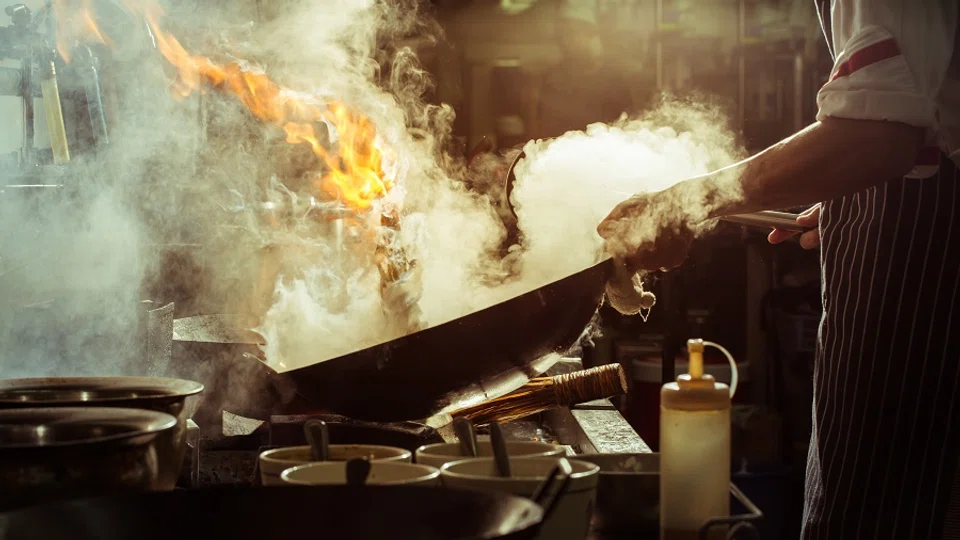Above Michelin: These professors would rather have Hakka pork belly with preserved mustard
Cultural historian Cheng Pei-kai did not enjoy his taste of molecular gastronomy too much on a recent visit to a high-end restaurant. The experience taught him that there is little point hankering after what everyone supposedly wants. One is better off staying true to himself and savouring something that truly tickles his taste buds.

As a few of my friends share the Pisces star sign, we gather for a joint birthday celebration every year. Invariably, I would be the one tasked with arranging the meal at a restaurant. This is no easy task as my friends do not want to eat at trendy Michelin-starred restaurants anymore. They still remember the last time we dined at a two-Michelin-starred restaurant. The expense was one thing, they said. It was a birthday celebration after all. But shouldn't the food have been excellent?
Till today, we do not have a clear answer about the quality of the food. Firstly, the meal wasn't filling. Secondly, we didn't really know what we were eating. We felt like a bunch of fools brought to a US space station for research. We pictured ourselves decked out in space suits, sitting down, listening to how the universe was created and how all of earth's creatures came into being. Next, we were each given a test tube containing a sticky substance and told that this was the essence of life scoured from the ends of the universe. In other words, it was a supplement to be taken for space travel, and was in all intents and purposes, a most amazing and nourishing delicacy.
The restaurant claimed to offer the best of French and Japanese cuisine, and that it crossed international boundaries by practising fusion cooking and molecular gastronomy. Strangely, the signboard of the restaurant is in Italian. Looking at the menu, I was greeted by English food names that were unheard of, paired with Chinese explanations that were beyond my level of intelligence. I couldn't help but suspect that the restaurant owner did not understand either French and Japanese, much less Italian, or even Chinese.
I could only infer that the chef had perhaps studied molecular biology but was too bored in the lab and thus became a chef, bringing everything he learnt in the lab into the kitchen.

One man's molecular gastronomy is another man's poison
The waiter that served us provided rather good service though, answering all our questions politely. Just that his answers were literal Chinese translations that sounded like Martian language, baffling the entire group of professors who could only hear but could not understand.
For example, there was a dish that resembled a fish, so we asked what fish it was. Shockingly, he answered that it was a fish with fins that swam in the water. Furthermore, its tail had three slits and its lips were slightly protruding. So was it a saltwater fish or a freshwater fish? He replied that he didn't know, but apologised politely and said that he would be right back. Two minutes later, he came back and reported that the chef had forgotten to ask if it was a saltwater fish when he imported it from Japan. But based on his experience, it was more likely a saltwater fish. What an accurate and scientific answer. I could only infer that the chef had perhaps studied molecular biology but was too bored in the lab and thus became a chef, bringing everything he learnt in the lab into the kitchen.

After the bewildering menu had our heads spinning and put us in a trance, we ordered dishes that we couldn't wrap our heads around. When the dishes finally arrived, we experienced ground-shaking aftershocks again. We realised that we weren't there to have a meal at all - we were there to take an art class and receive aesthetic reeducation. In front of us were enormous porcelain shallow plates - very exquisite British Wedgwood dinnerware - dotted with seven or eight mounds of food in vibrant colours of the rainbow. Red, orange, yellow, green, blue, indigo, and violet; it looked like a painter's palette and was quite beautiful. But the size of each mound seemed modest and monastic - it was even more "delicate and pure" than Japan's Kaiseki cuisine.
After we finished our food, my friends lamented that they didn't know what they had eaten and weren't full either, but were all too afraid to order more, for fear of insulting the food skilfully prepared by the chefs. The science behind molecular gastronomy is too profound - we didn't bring microscopes, and neither were our taste buds microscopic enough to pick up the flavours. We truly didn't know what we ate or tasted. We vowed to never attend another molecular gastronomy class.
A hearty meal to restore the mind and spirit
So this time, I arranged for a meal at an old restaurant that served traditional Hakka cuisine. I was sure my friends were going to have their bellies filled. I ordered pork belly with preserved mustard, salt-baked chicken, stewed beef brisket in chuhou (柱侯) sauce, pork shank carrot soup, oil-braised Marble goby, Hakka yong tau foo, stir-fried squid with yellow chives, salt and pepper fried Chinese noodlefish, fried prawns with soy sauce, stir-fried pea sprouts... As I was about to order more, the waiter stopped me and said that the food we ordered was more than enough for a group of seven. He advised me to order again if it was really not enough.
These are traditional dishes and have nothing to do with snazzy molecular techniques. Neither are they trendy or anything to boast about. But they are, in a word, absolutely delicious.

The first dish that arrived was pork belly with preserved mustard. Everyone asked for a bowl of rice to go with the dish. We eagerly helped ourselves to the morsels of fall-apart steamed pork and preserved mustard, while drizzling the rich gravy on our rice at. This was pure enjoyment; good food ought to taste this delicious, my friends declared. I tasted a piece of pork, and it was indeed tasty. The pork belly was melt-in-the-mouth and not oily at all. In fact it tasted like tofu pudding with a hint of cape jasmine fragrance. Incredibly, the layers of lean meat weren't tough at all. It tasted better than your usual braised pork belly (东坡肉), and could even be on par with Shanghai-style braised pork belly, the best of its kind.
These are traditional dishes and have nothing to do with snazzy molecular techniques. Neither are they trendy or anything to boast about. But they are, in a word, absolutely delicious. The salt-baked chicken, yong tau foo and stewed beef brisket were also filling and well-made. Amazingly, they weren't too filling at all, and we elderly foodies cleared everything on the table as if our stomachs didn't know what it meant to be full.

After we finished our food, I suggested having some dessert to complete our birthday meal. Traditional Hakka restaurants didn't serve cakes but they had "chicken necks" (鸡颈粄). Two Pisceans among us who did not eat chicken were apprehensive about eating "chicken necks". I calmly explained, "This 'chicken neck' is a Hakka dessert. Trust me, it's very delicious." Everyone was doubtful and thought that I was playing a trick on them. It was not until the "chicken necks" were served that they knew what it was - glutinous rice rolls filled with peanut powder. It has such a scary name because the chopped rice rolls resemble broken chicken necks. After everyone had a bite, they all agreed that the dessert was incredibly delicious and certainly the highlight of our meal. We finally enjoyed real food this time round, and everything was perfect.



![[Photos] Fact versus fiction: The portrayal of WWII anti-Japanese martyrs in Taiwan](https://cassette.sphdigital.com.sg/image/thinkchina/3494f8bd481870f7c65b881fd21a3fd733f573f23232376e39c532a2c7593cbc)

